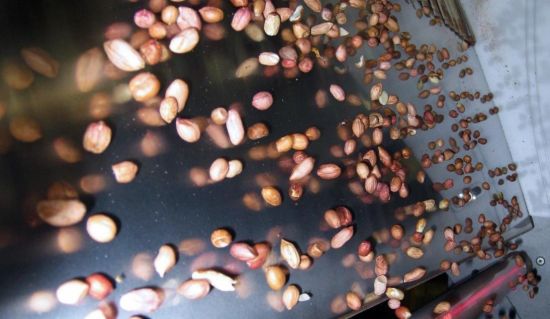Aflatoxin in food and milk can cause serious damage to human and animal health and directly harm the reputation of related companies. Nestlé's subsidiary, the Hsu Fu Kee Group, and an old American peanut raw material supplier, said they were completely worried about the problem of aflatoxin in their products because they avoided this risk with advanced laser sorting technology.
The lethality of aflatoxin is 68 times that of arsenic and can seriously damage the liver of humans and animals. Aflatoxin can cause fever, anorexia, abdominal pain, vomiting, and hepatitis. What's more, if aflatoxin accumulates in the body for a long time, its toxicity will reduce immunity and cause cancer risk. Therefore, it is listed as a kind of carcinogen by the World Health Organization and is a long-term problem for the scientific community and regulatory agencies. A big problem.
Aflatoxins are very common in foods and plants grown in parts of Asia, Africa and the United States. Because this toxin is derived from two fungi, they prefer a hot and humid climate. However, in February of this year, the European Food Safety Authority (EFSA) reported that higher levels of aflatoxin were detected in some foods from Europe. The public called on the European Food Safety Authority to conduct a comprehensive risk assessment of aflatoxin.
The most toxic aflatoxin B1 is found in a variety of natural foods. The fungus can infect crops such as wheat, corn, and cotton, as well as nuts such as walnuts and peanuts. In addition, spices, vegetable oils, figs, dried fruits, cocoa beans and rice are often infected with aflatoxin B1. If the animal is fed a diet contaminated with aflatoxin B1, another variant of aflatoxin M1 will be present in the produced milk, and conventional pasteurization cannot eliminate aflatoxin in milk.
If the intake is within safe limits, aflatoxins will not cause harm to humans and animals, so the aflatoxin content in the food must be kept within safe limits. Therefore, the laws of many countries stipulate the highest standards for aflatoxin in food. If the food safety regulatory authorities find that the content exceeds the standard, the relevant enterprises will be severely punished; in addition, the product recall incident will bring huge economic losses to the enterprise, and even a painful brand price.
The economic and health threats of aflatoxin are even more pressing due to their invisible properties.
Sampling test can not determine whether aflatoxin exceeds the standard
Some food companies will use sampling methods to determine whether the aflatoxin content in the product is up to standard. This demonstrates the company's responsible food safety control philosophy, but unfortunately, this method is not reliable - the sampling method itself is highly random, the sample is qualified, and does not mean that all products are in compliance with safety standards. . We can imagine that a large amount of peanuts fill a huge warehouse. Some parts of the warehouse may be infected with aflatoxin. Therefore, if the whole warehouse is tested, the aflatoxin content is excessive; however, if sampling, Samples that may have been selected just did not get infected. Therefore, the method of sampling detection does not prove that the quality of the whole batch of peanuts is qualified.
An alternative to sampling detection is to burn the peanuts and then peel them, but this will shorten the shelf life of the peanuts and increase the cost of the business, so food manufacturers are reluctant to adopt this method.
The safest and most reliable method for controlling aflatoxin is automated optical sorting.
Automatic sorting technology to identify and reject products containing aflatoxin

CSG is a global leader in food safety technology. CSG's sorting equipment combines near-infrared spectroscopy, X-ray, fluorescence and laser to detect food on the production line, analyze the surface characteristics and structure of each product, and ensure the quality and safety of the food. CSG laser technology is an efficient and feasible method for detecting aflatoxin. After being irradiated by CSG equipment, the light signal reflected by the food infected with aflatoxin is very weak, and is obviously different from the reflection signal of good products, and can be used for the detection of aflatoxin in various foods. |